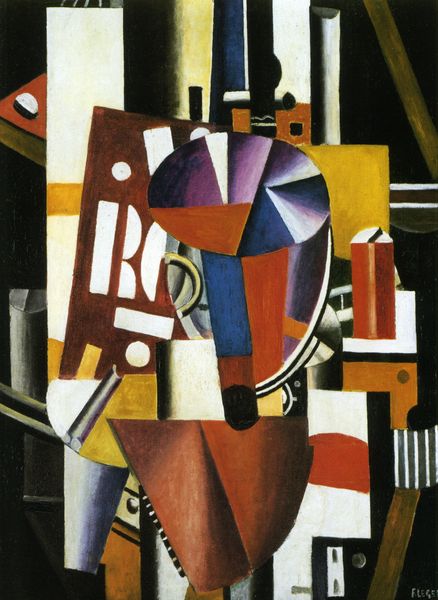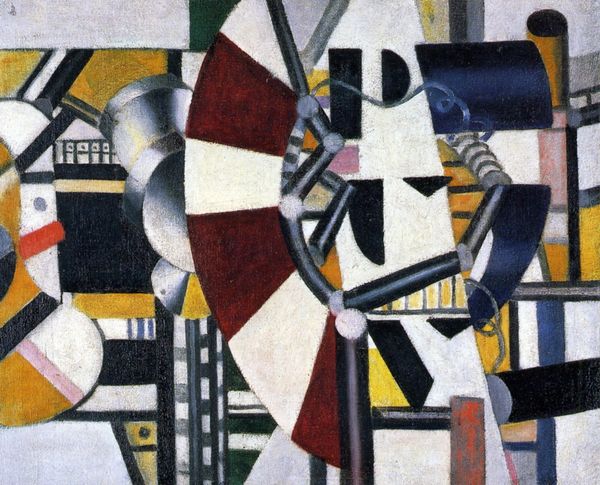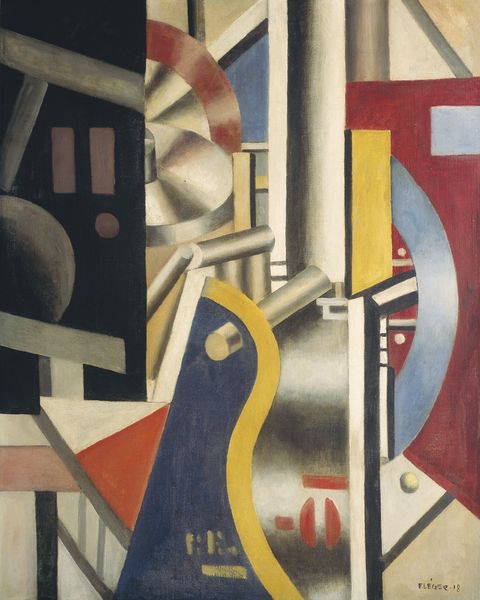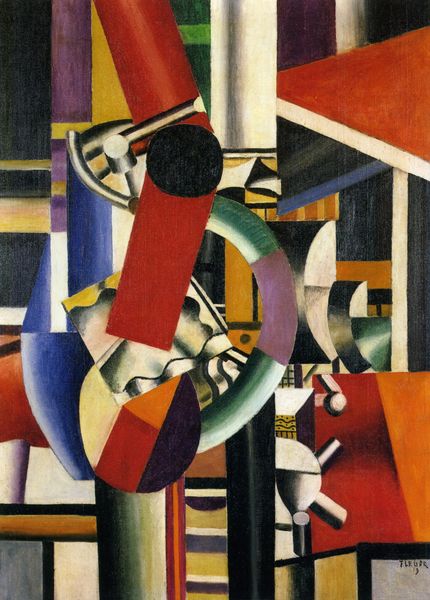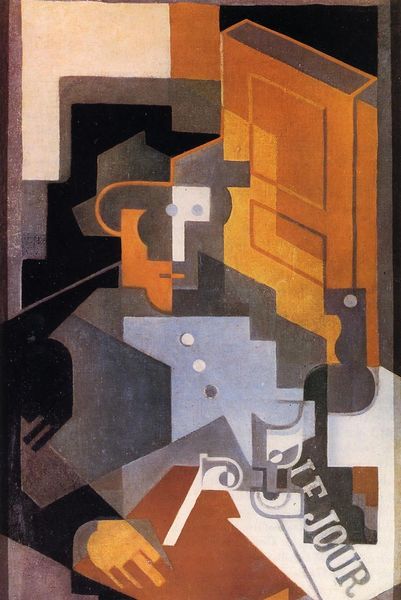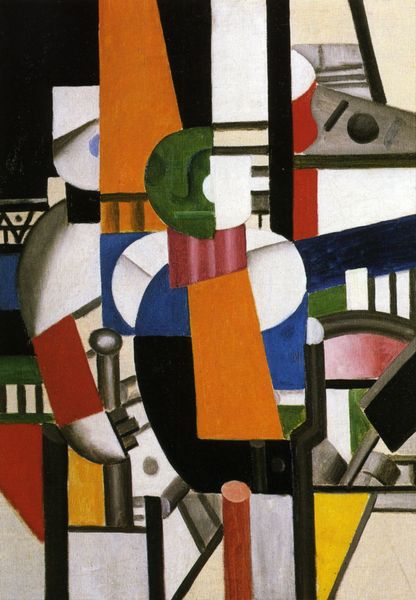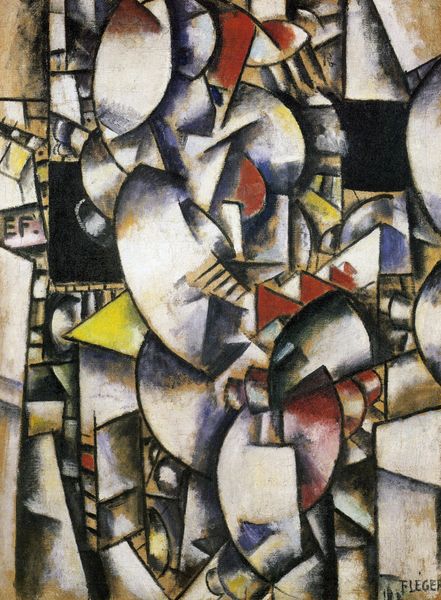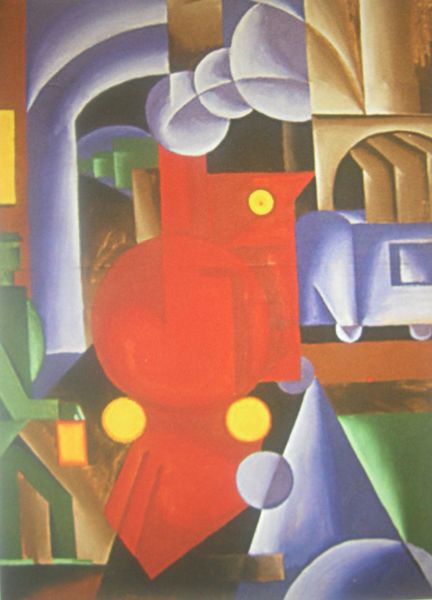
oil-paint
#
cubism
#
abstract painting
#
book
#
oil-paint
#
oil painting
#
geometric
#
abstraction
#
painting painterly
#
history-painting
#
modernism
Dimensions: 64.8 x 81.3 cm
Copyright: Public domain US
Curator: Taking a look now at Fernand Léger’s "Still Life," an oil painting created in 1918. I find myself completely drawn in by this bold, almost architectural composition. Editor: It strikes me as more of a puzzle than a still life, honestly. A collection of shapes, colors, and patterns vying for attention. It feels chaotic, almost frantic, like the artist has taken ordinary objects and shattered them into pieces. Curator: Indeed. It embodies the Cubist movement where artists like Léger aimed to depict subjects from multiple viewpoints simultaneously, breaking down objects into geometric forms. And it really says something that it was produced during the Great War, an era of fractured societies and perceptions. Editor: That context helps explain the visual turbulence. But there's also an undeniable beauty to it, right? The checkerboard pattern against that vibrant blue square is so eye-catching, it almost hypnotizes me! The choice of using industrial imagery creates a dialogue about how human civilization coexists. Curator: Léger had an interest in bringing an avant-garde vision to ordinary life. He saw beauty in machines and everyday objects and elevated them to the level of art. "Still Life" shows his love for both form and function. It invites the viewer to explore new aesthetic dimensions, seeing beauty in industry, precision, and new geometric expression. Editor: It is undeniably innovative. But, in some ways, it's the very denial of 'life' that gives the still life a mechanical rhythm of colors and shapes. It prompts questions around perception itself, challenging our conventional interpretations of beauty. It does echo a sentiment on destruction. Curator: It seems we each respond quite viscerally! Léger provides that for us; he uses strong colors, bold lines, to trigger such distinct interpretations. The work sits in a private collection, so the general public may never see this artwork, which to me is incredibly sad, given its significance in the study of Modernism. Editor: For all of its intellectual puzzles and its historical context, I find myself unexpectedly moved, even exhilarated, by its disruptive energy. A still life to spark all others that followed!
Comments
No comments
Be the first to comment and join the conversation on the ultimate creative platform.

